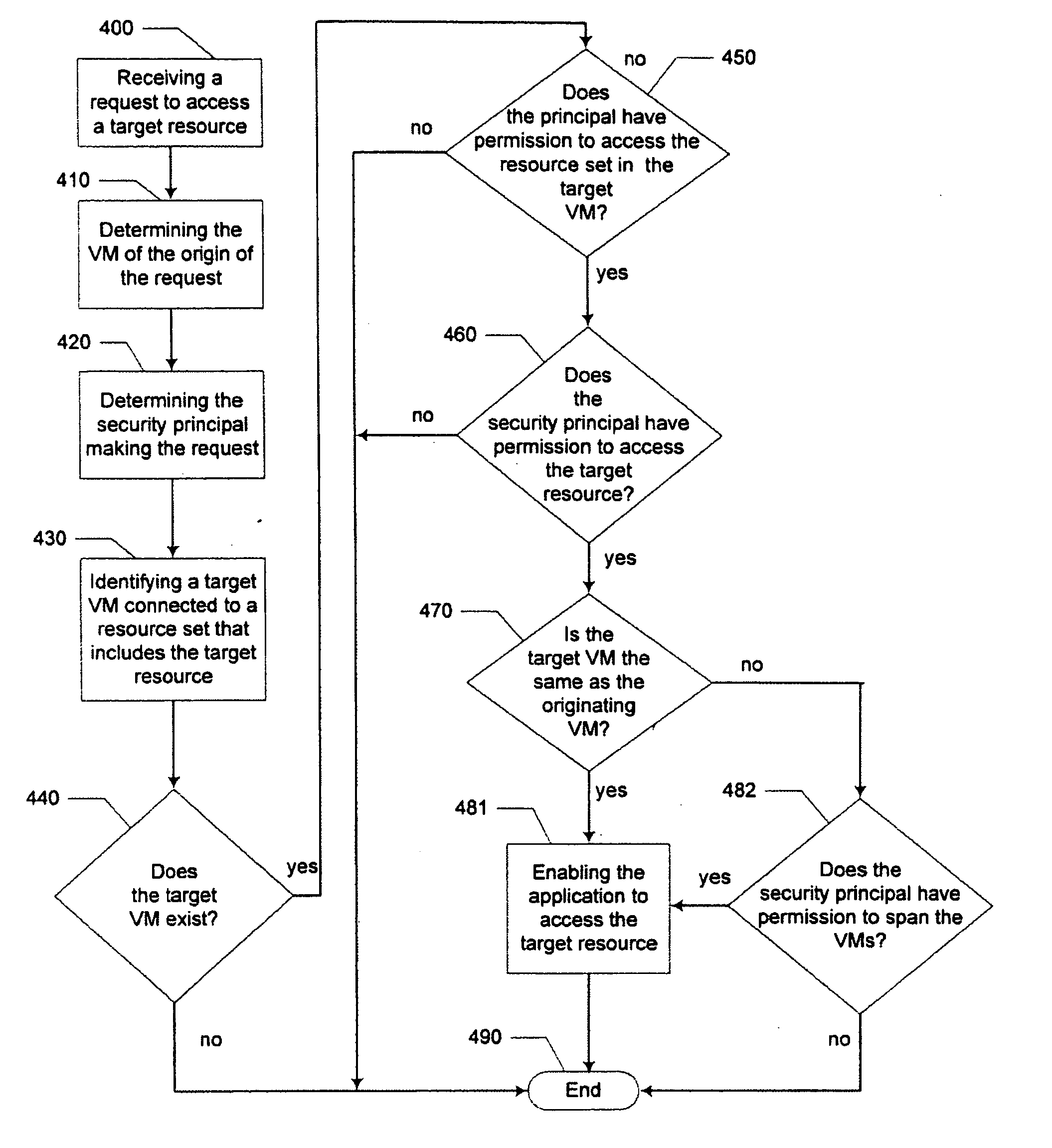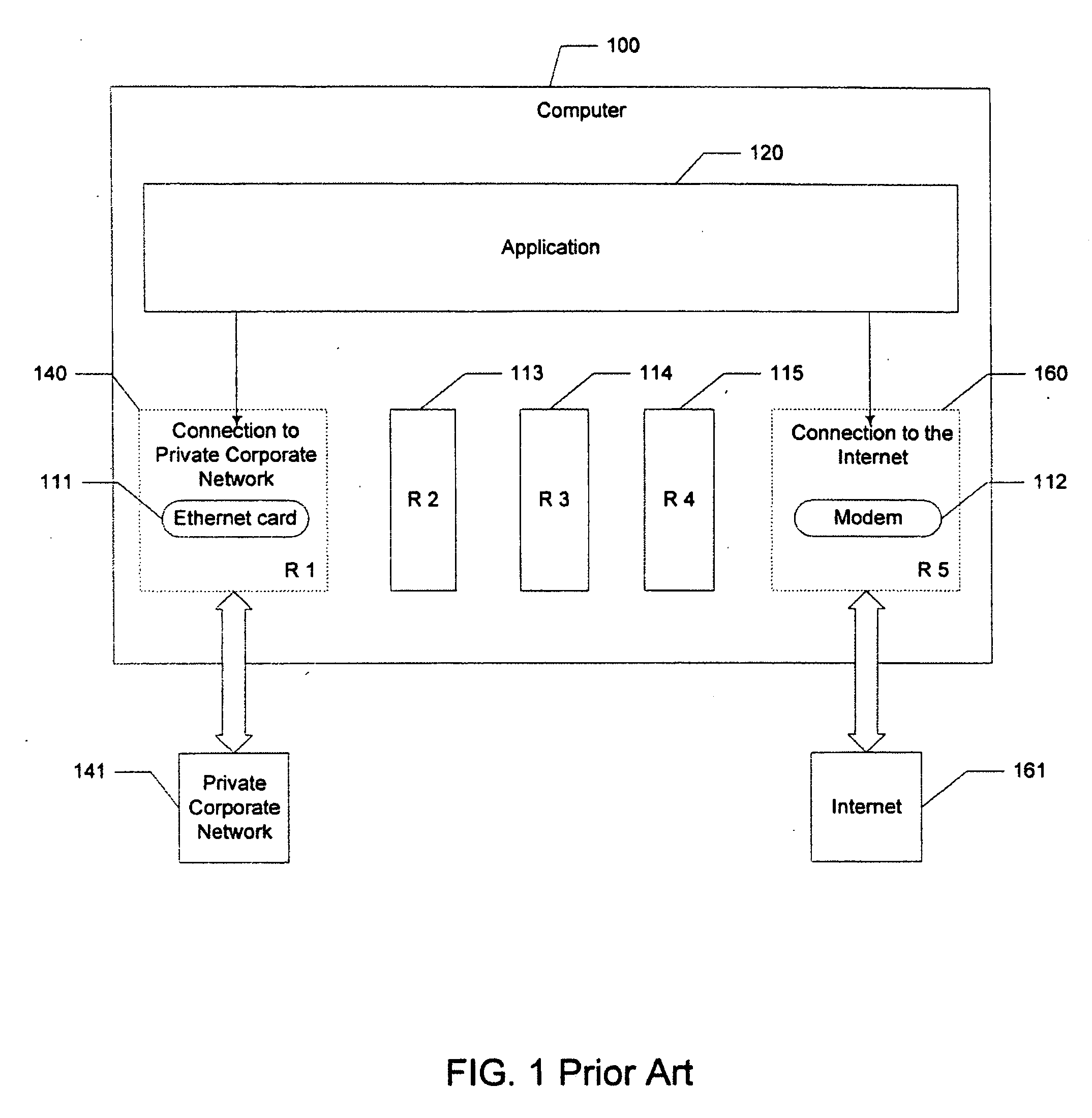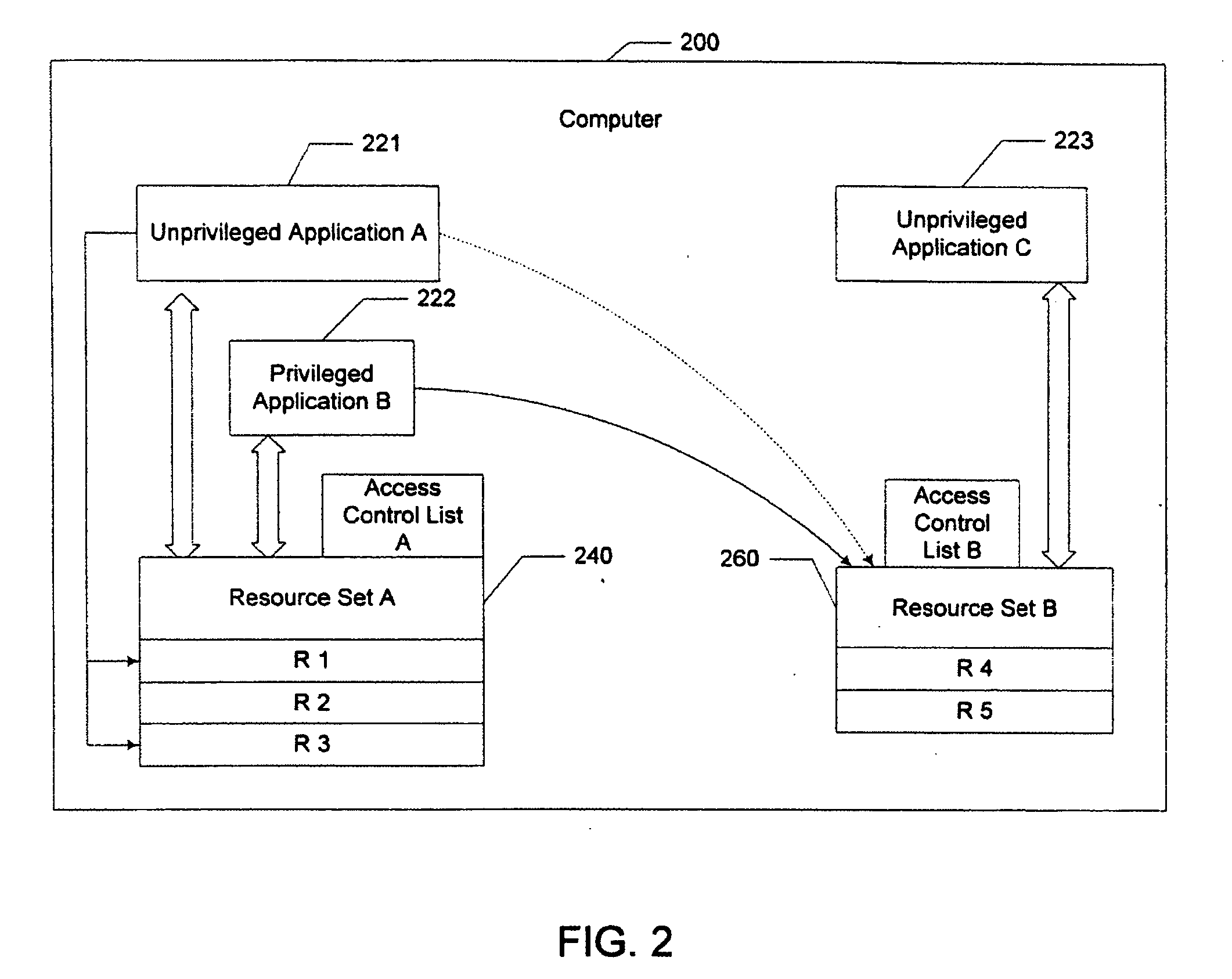Methods and systems of managing concurrent access to multiple resources
a technology of concurrent access and resources, applied in the field of managing concurrent access to multiple resources, can solve problems such as security problems, restricted access using common user authentication techniques, and failure to address network integrity issues in situations
- Summary
- Abstract
- Description
- Claims
- Application Information
AI Technical Summary
Benefits of technology
Problems solved by technology
Method used
Image
Examples
Embodiment Construction
[0022] The present invention is directed to a method and system for managing concurrent access to multiple resources. The term “resource” used in this invention can mean, for example, but is not limited to, a connection to a network, a connection to a printer, a local file system, a section of shared memory, or a software object.
[0023] Application instances are assigned to virtual machines, each of which is associated with a set of resources. Access control lists specify, for each principal, whether application instances owned by the principal can perform various resource-access operations. Specifically, an application instance is termed “unprivileged” if, by reason of its principal's permissions, it may never concurrently access resources in more than one virtual machine. A “privileged” application instance, on the other hand, may or may not be allowed such concurrent access, depending on circumstances such as the nature of the requested resources.
[0024] Although it is not requir...
PUM
 Login to View More
Login to View More Abstract
Description
Claims
Application Information
 Login to View More
Login to View More - R&D
- Intellectual Property
- Life Sciences
- Materials
- Tech Scout
- Unparalleled Data Quality
- Higher Quality Content
- 60% Fewer Hallucinations
Browse by: Latest US Patents, China's latest patents, Technical Efficacy Thesaurus, Application Domain, Technology Topic, Popular Technical Reports.
© 2025 PatSnap. All rights reserved.Legal|Privacy policy|Modern Slavery Act Transparency Statement|Sitemap|About US| Contact US: help@patsnap.com



